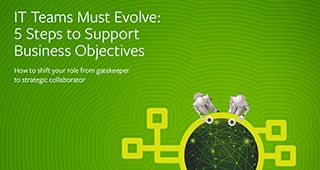Automation is a buzzword nowadays, especially in enterprises. In this era of convenience, automation is almost regarded as a necessity because it saves time, energy, and money, and reduces errors, especially human error.
It’s already playing an important role in across the business, including in the areas of software development, delivery, and support, and in enterprise service management. That latter use case begs a few questions, such as:
- What is the need?
- What are the different challenges?
- How can we do it effectively?
In this article, we are going to talk about all of this, in brief.
The need
Digitization has increased the complexity of IT processes across all industries, accelerating the need to orchestrate the management of the enterprise services that support them. Those services now involve integrating new software and upgrading and maintaining the existing infrastructure. To keep up, organizations can expend valuable time, energy, and resources, or they can simply automate it.
So, let us take a simple example of a process of getting salary slip, in both ways manually and automated.
Manually, you would go to your company website or third-party website, login, follow the prompts, and request a download, etc. This requires your awareness of the process of getting salary slip and you need to follow that path on that website. So indirectly you are bound to that website and their steps to perform a simple operation like downloading a salary slip. Now, if the website changes, for any reason, you must learn the steps all over again till you become aware again. This cost some time and money for sure. Also, on top of it every individual has a different experience and feeling about the same process.
Instead, if we automate this process, you could simply go to your company website and request the slip through an automated, self-service interface and have it delivered to your email’s inbox. Any backend changes would be invisible to you as the end user because the customer-facing, automated interaction remains unchanged. That’s awesome, isn’t it?
By automating the task, you can get what you need quickly and easily—and with fewer clicks—and instead focus on more important aspects of your job.
Imagine automating every mundane, repetitive task that you encounter throughout the day, and how much time it could save so you could focus on more productive tasks. That also holds true at the business level—automation can tackle the mundane tasks so workers can dedicate their efforts to tasks that require a higher level of critical thinking and advance the overall business strategy.
The obstacle
If automation makes life easier, why isn’t everyone doing it? Because the “how” is not as easy as it might seem. Some of the challenges can include:
- An enterprise service management system that does not have a codeless way to integrate with other software without writing code.
- An enterprise service management system that has codeless ways, but a limited ability to integrate with third-party software.
- An organization that has the latest automation software like robotic process automation (RPA), however, the enterprise service management system does not have a direct, codeless, or workflow way of connecting to it.
As organizations have evolved, they have purchased multiple software solutions to satisfy their needs, which has created technology and integration challenges. Sometimes those challenges are so complex that it might seem better to manage the processes manually rather than rely on automation. This leads to running the business as usual, and the organization misses out on the benefits of automation.
Automation to the rescue
So, the question then becomes, how can you maximize your investment in your current infrastructure and prepare for new technology as it emerges? We think the first goal is to consider the benefits of automation. The second is to understand which software can satisfy your needs now and, in the future, and integrate easily and smoothly with the multiple software solutions you already have, ideally in a codeless way through configuration and not by writing code.
At BMC, we’re helping companies embrace automation as they evolve toward becoming an Autonomous Digital Enterprise with solutions that leverage emerging technologies like AI and ML to enable data-driven business decisions, enhance quality, reduce unnecessary manual labor, empower employees, and optimize IT resources.
Learn more at bmc.com/ade.







